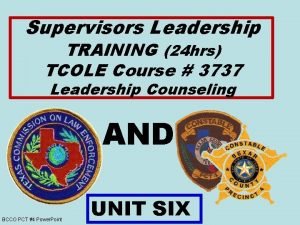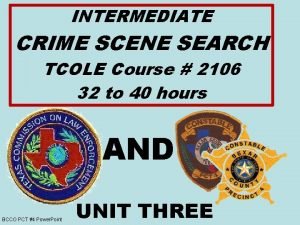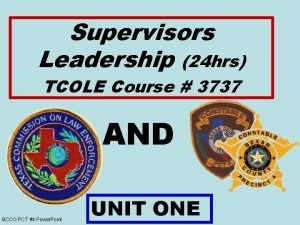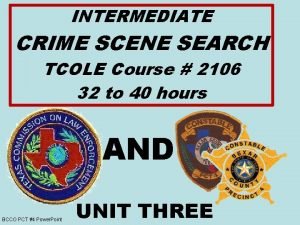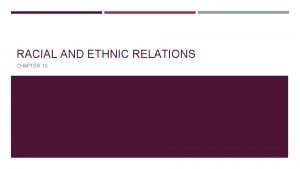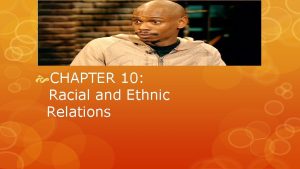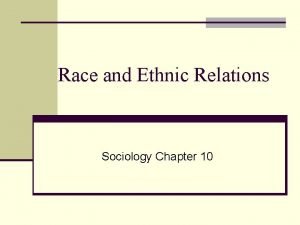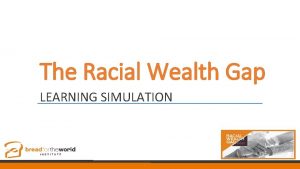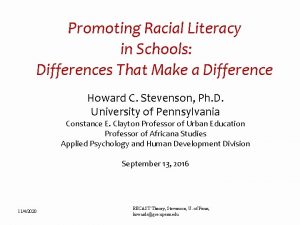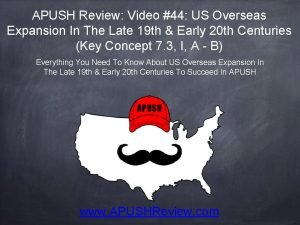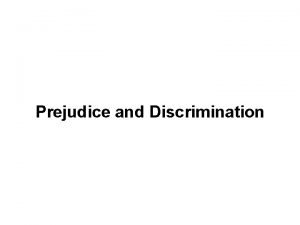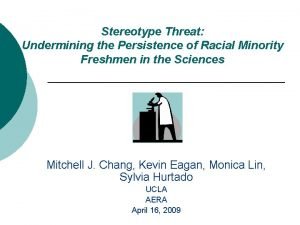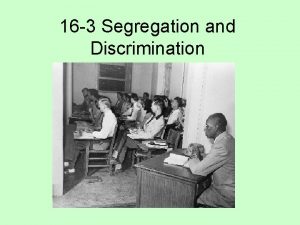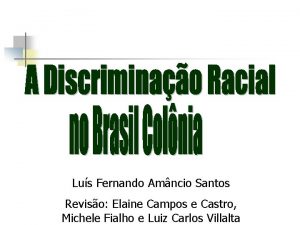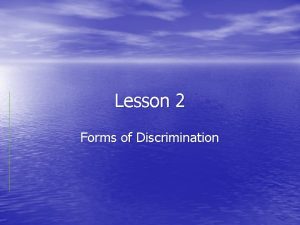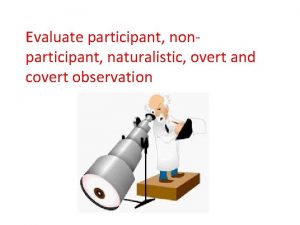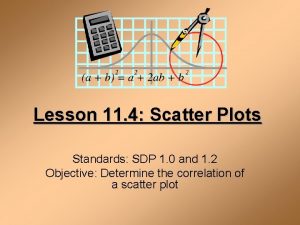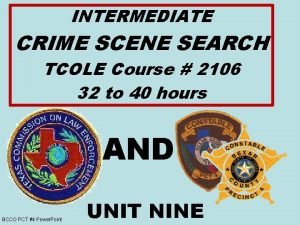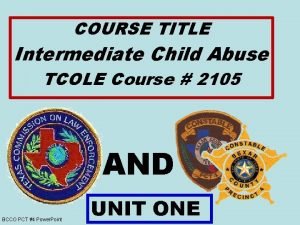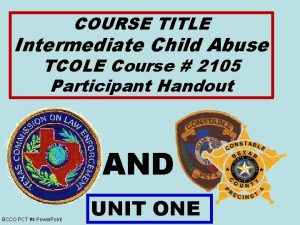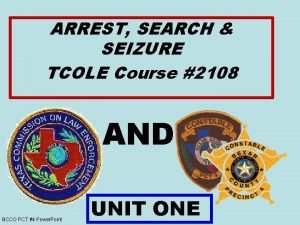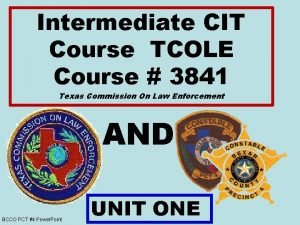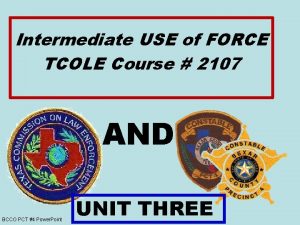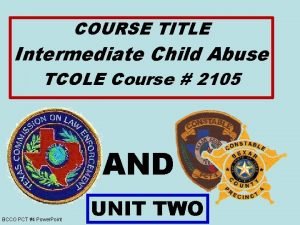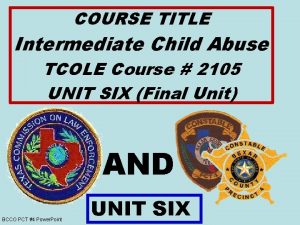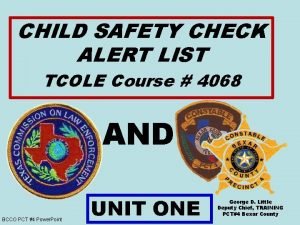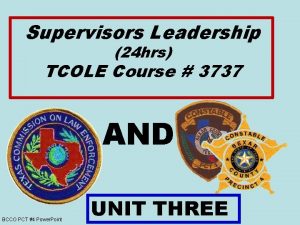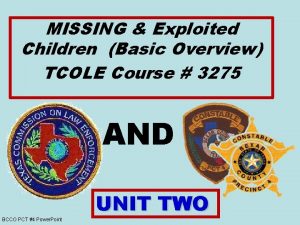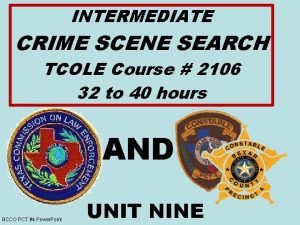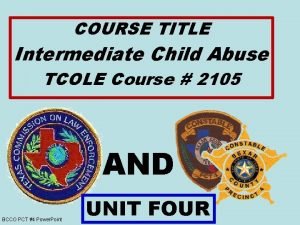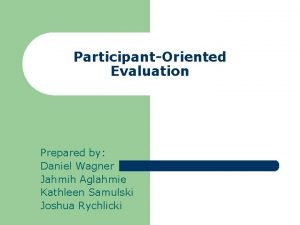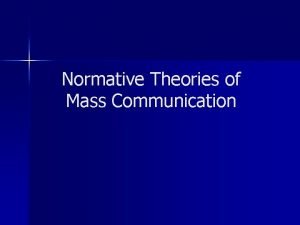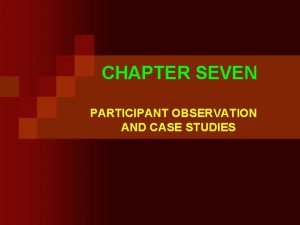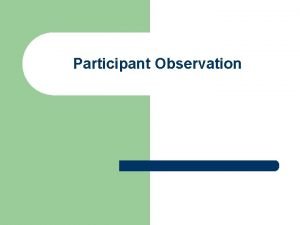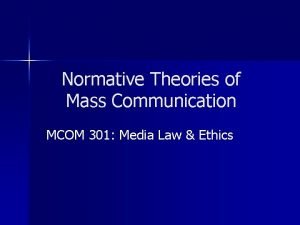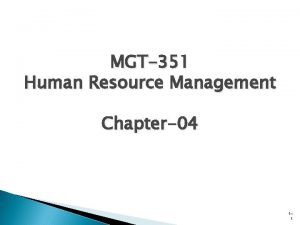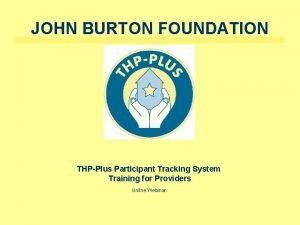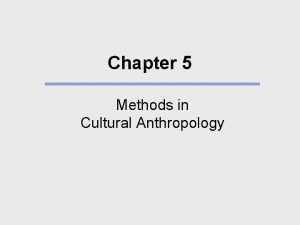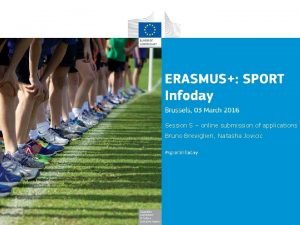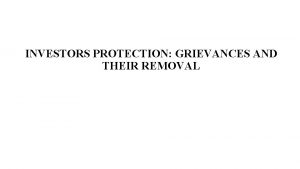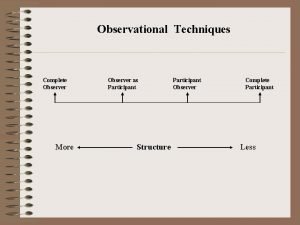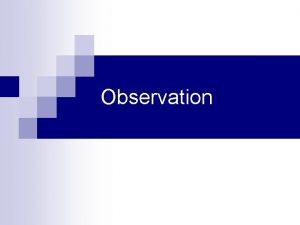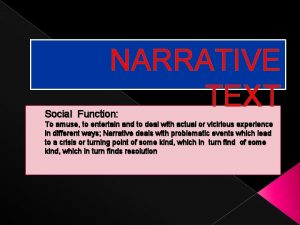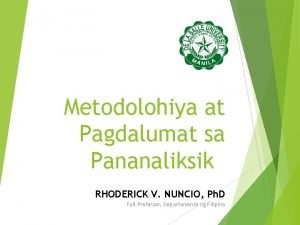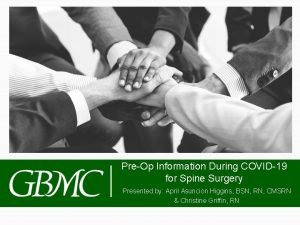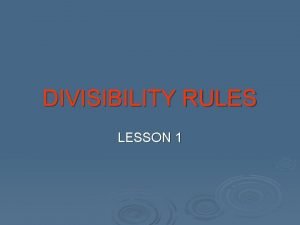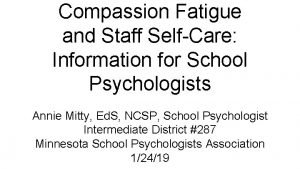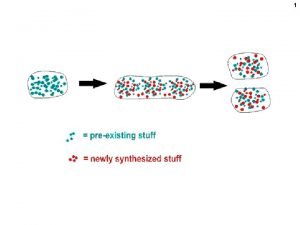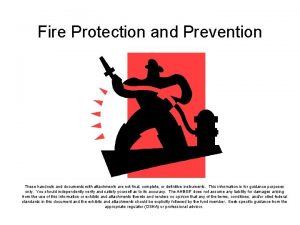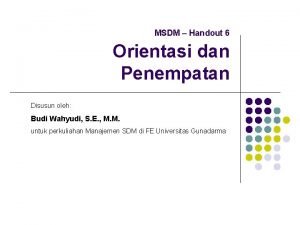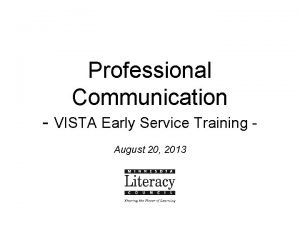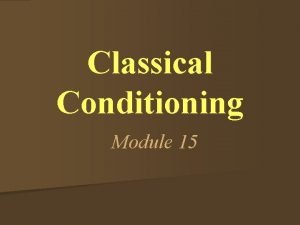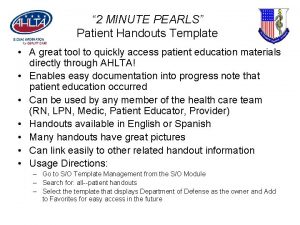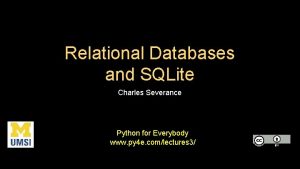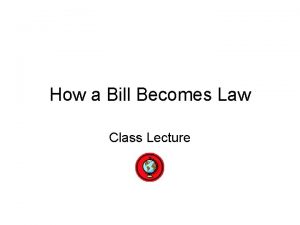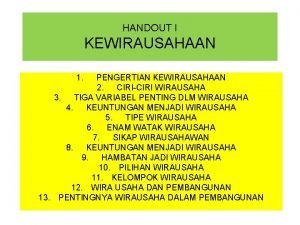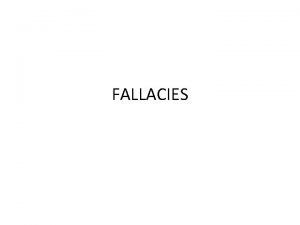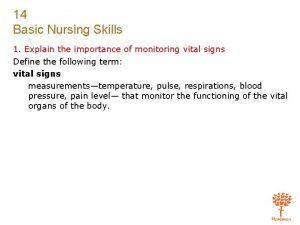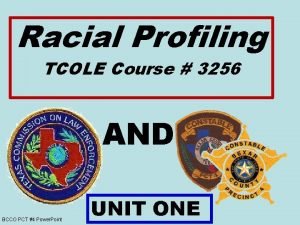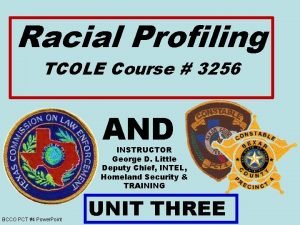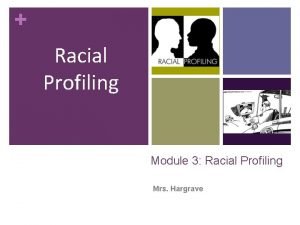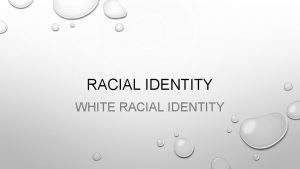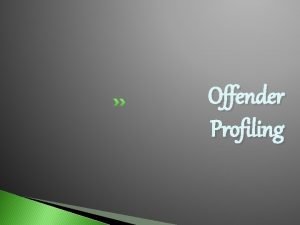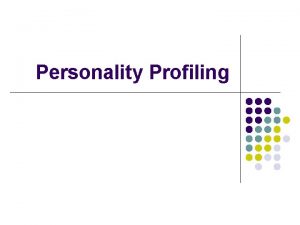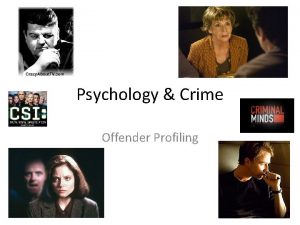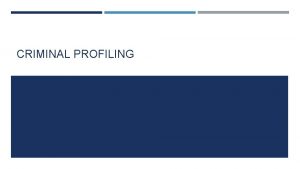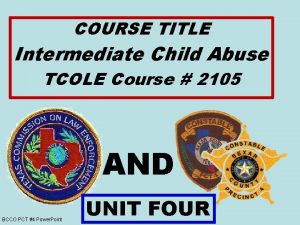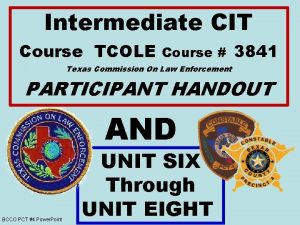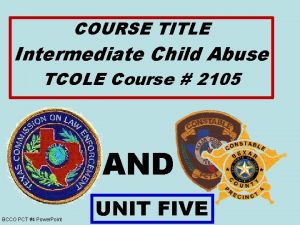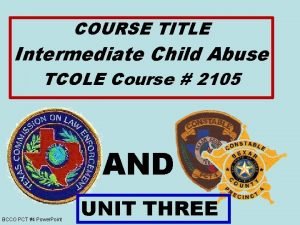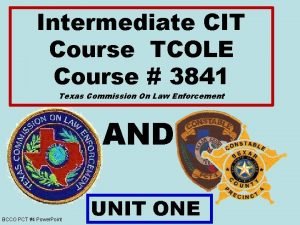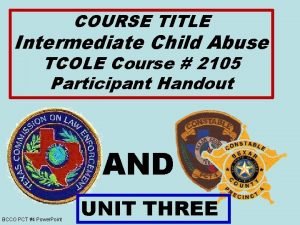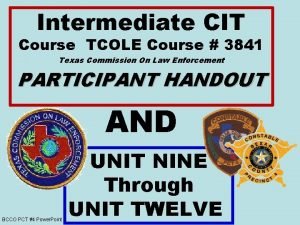Racial Profiling TCOLE Course 3256 Participant Handout AND


















































































































- Slides: 114

Racial Profiling TCOLE Course # 3256 Participant Handout AND George D. Little Deputy Chief, INTEL, Homeland Security & TRAINING BCCO PCT #4 Power. Point UNIT ONE

ADMINISTRATIVE • Please complete the BCCO PCT #4 Registration form and turn it in now. • Make sure you sign TCOLE Report of Training (PID#, Full Name and DOB). • All cell phones off please – pay attention to course materials and show common respect & courtesy.

About Your Instructor Course Facilitator - Mentor George D. Little A. S. & B. S. Criminal Justice & Sociology B. S. CJ Wayland Baptist University, San Antonio M. S. Criminology & Counter-Terrorism University of the State of New York 2012 T. C. L. E. O. S. E. Professional Achievement Award Certified Crime Prevention Specialist (C. C. P. S. ) TCLEOSE Basic Instructor Certificate 1984 TCLEOSE Master Peace Officer 1991 MP Special Operations Operator Counter-Terrorism 1988 Graduate Drug Enforcement Administration Academy 1977 43 - years Law Enforcement Experience 40 -Years Teaching & Instructor Experience

DISCLAIMER Due to the dynamic nature of law enforcement and the impact of court decisions and statutory changes on police it is important that each agency review this information to verify that it is consistent with current federal, state and local law and regulations, and with agency policy & procedure and/or SOP. This information is not

to substitute for the advice of legal counsel. You should speak with your legal advisor about the sufficiency of your agency’s manual, policy, curriculum, and training program. This material should not be used as the sole basis for compliance with any law or regulation, and agencies should not rely on this material as a legal defense in any civil or criminal

action. TCOLE has compiled and distributed this information as a guide for the individual agency, and the Bexar County Constable’s Office PCT#4 is not responsible for the content and delivery of this material by other law enforcement agencies.

“To stop and search an individual simply because of his race, gender, or economic level is unlawful as well as unconstitutional, and should not be tolerated in any law enforcement agency. ” Bexar County Constable’s Office PCT#4 Standing Operating Procedure

COURSE/LESSON OVERVIEW Participants will be able to identify profiling and the negative perceptions, and legal aspects of racial profiling.

Learning Objectives Learning Objective 1. 0: The participant will be able to understand profiling and explain the background and negative impact of racial profiling in law enforcement profession. Learning Objective 1. 1 : The participant will be able to identify the legal aspects of racial profiling

Learning Objective 1. 2 : The participant will be able to identify the legislative requirements placed upon peace officers and law enforcement agencies regarding racial profiling. Learning Objective 1. 3 : The participant will able to identify and explain Supreme Court and other court decisions regarding traffic stops and prohibited racial profiling.

1. 0 Background on Racial Profiling A. In its broadest sense, racial profiling by law enforcement officers is the practice of some officers to stop, search, and investigate ______, both on the street and while traveling in vehicles, based solely on their ____ or ____ background, rather than on their actions.

B. Racial profiling is any police street or traffic stop, based ______ on racial or ethnic stereotypes that has the end result of treating minorities significantly differently than non-minority citizens. This volatile issue can effectively polarize police agencies and the communities they serve

C. The majority of complaints alleging racial profiling follow vehicle stops by police.

1. 1 Legal Aspects of Racial Profiling Requirements Racial Profiling CCP 3. 05 Racial Profiling Prohibited CCP 2. 131

CCP 3. 05 RACIAL PROFILING. In this code, "racial profiling" means a law enforcement-initiated action based on an individual's _______, ethnicity, or national origin rather than on the individual's behavior or on information identifying the individual as having engaged in criminal activity.

CCP 2. 131 RACIAL PROFILING PROHIBITED. A peace officer may not engage in racial profiling. not

Law Enforcement Policy CCP 2. 132 On racial profiling Reports required for CCP 2. 133 Traffic & Pedestrian stops Liability CCP 2. 136 Racial Profiling education For Police Chiefs EC 96. 641

CCP 2. 132 Law Enforcement Policy on Racial Profiling. (a) In this article: (1) "Law enforcement agency" means an ______ of the state, or of a county, municipality, or other political subdivision of the state, that employs peace officers who make traffic stops

CCP 2. 132 in the routine performance of the officers' official duties. (2) "Race or ethnicity" means of a particular _____, including Caucasian, African, Hispanic, Asian, or Native American descent.

CCP 2. 132 (b) Each law enforcement agency in this state shall adopt a detailed written policy on racial profiling. The policy must: (1) clearly define ______ constituting racial profiling; (2) strictly prohibit peace officers employed by the agency from _____ in racial profiling;

CCP 2. 132 (3) implement a process by which an individual may file a _____ with the agency if the individual believes that a peace officer employed by the agency has engaged in racial profiling with respect to the individual; (4) provide public _____ relating to the agency's complaint process;

CCP 2. 132 (5) require appropriate ______ action to be taken against a peace officer employed by the agency who, after an investigation, is shown to have engaged in racial profiling in violation of the agency's policy adopted under this article;

CCP 2. 132 (6) require collection of information relating to traffic _______ in which a citation is issued and to arrests resulting from those traffic stops, including information relating to: (A) the race or ethnicity of the individual ______; and (B) whether a search was conducted and, if so, whether the person detained _____ to the search; &

CCP 2. 132 (7) require the agency to submit to the governing body of each county or municipality served by the agency an annual _____ of the information collected under Subdivision (6) if the agency is an agency of a county, municipality, or other political subdivision of the state.

CCP 2. 132 (c) The data collected as a result of the reporting requirements of this article shall not constitute __________evidence of racial profiling. (d) On adoption of a policy under Subsection (b), a law enforcement agency shall examine the feasibility of installing ____ camera and transmitter-activated equipment in each agency law enforcement

CCP 2. 132 vehicle regularly used to make traffic stops and transmitter-activated equipment in each agency law enforcement motorcycle regularly used to make traffic stops. If a law enforcement agency installs video or audio equipment as provided by this subsection, the policy adopted by the agency under Subsection (b) must include standards for reviewing video

CCP 2. 132 and audio documentation. (e) A report required under Subsection (b)(7) may ______ include identifying information about a peace officer who makes a traffic stop or about an individual who is stopped or arrested by a peace officer. This subsection does not affect the collection of information as required by a policy under Subsection (b)(6).

(f) On the commencement of an investigation by a law enforcement agency of a complaint described by Subsection (b)(3) in which a video or audio recording of the occurrence on which the complaint is based was made, the agency shall promptly provide a _____ of the recording to the peace officer who is the subject of the complaint on written request by CCP 2. 132 the officer.

CCP 2. 133 (a) In this article, “race or ethnicity” has the meaning assigned by Article 2. 132(a). (b) A peace officer who stops a motor vehicle for an alleged violation of a law or ordinance shall ____ to the law enforcement agency that employs the officer information relating to the stop,

CCP 2. 133 including: (1) a physical ______ of any person operating the motor vehicle who is detained as a result of the stop, including: (A) the person’s ______; and (B) the person’s ____ or ethnicity, as stated by the person or, if the person does not state the person’s race or

CCP 2. 133 including: ethnicity, as determined by the officer to the best of the officer’s ability; (2) the initial _____ for the stop; (3) whether the officer conducted a ______ as a result of the stop and, if so, whether the person detained consented to the search;

CCP 2. 133 including: (4) whether any contraband or other evidence was discovered in the course of the _____ and a description of the contraband or evidence; (5) the reason for the _____, including whether: (A) any contraband or other evidence was in plain ______;

CCP 2. 133 including: (5)(B) any ______ cause or reasonable suspicion existed to perform the search; or (C) the search was performed as a result of the towing of the motor vehicle or the ______ of any person in the motor vehicle;

CCP 2. 133 including: (6) whether the _____ made an arrest as a result of the stop or the search, including a statement of whether the arrest was based on a violation of the Penal Code, a violation of a traffic law or ordinance, or an outstanding warrant and a statement of the offense charged;

CCP 2. 133 including: (7) the street address or approximate _____ of the stop; and (8) whether the officer issued a written _____ or a citation as a result of the stop.

CCP 2. 136 LIABILITY. A peace officer is ___ LIABILITY liable for damages arising from an act relating to the collection or reporting of information as required by Article 2. 133 or under a policy adopted under Article 2. 132.

EC 96. 641 (a) The Bill Blackwood Law Enforcement Management Institute of Texas shall establish and offer a program of initial training and a program of continuing education for police chiefs. The curriculum for chiefs each program must relate to law enforcement management issues.

EC 296. 641 The institute shall develop the curriculum for the programs. The curriculum must be approved by the Texas Commission On Law Enforcement. (b) Each police chief must receive at least ___ hours of continuing education provided by the institute under this section each 24 -month period. The Texas Commission On

EC 296. 641 Law Enforcement by rule shall establish a uniform 24 -month continuing education training period. (c) An individual appointed or elected to that individual's first position as chief must receive not fewer than 80 hours of initial training for new chiefs in accordance with Subsections (d) and (e).

EC 296. 641 (d) A newly appointed or elected police chief shall complete the initial training program for new chiefs not later than the second anniversary of that individual's appointment or election as chief. The initial training program for new chiefs is in addition to the initial training and continuing education required by Chapter 1701, Occupations Code. The Texas

EC 296. 641 Commission on Law Enforcement by rule shall establish that the first continuing education training period for an individual under Subsection (b) begins on the first day of the first uniform continuing education training period that follows the date the individual completed the initial training program.

EC 296. 641 (e) The institute by rule may provide for the waiver of: (1) the requirement of all or part of the 80 hours of initial training for new chiefs to the extent the new chief has satisfactorily completed equivalent training in the 24 months preceding the individual's appointment or election;

EC 296. 641 (2) the continuing education requirements of Subsection (b) for an individual who has satisfactorily completed equivalent continuing education in the preceding 24 months. (f) An individual who is subject to the continuing education requirements of Subsection (b) is exempt from other continuing education requirements under Subchapter H, Chapter 1701, Occupations Code

EC 296. 641 (g) In this section, "police chief" or "chief" means the head of a police department. (h) The chief of a municipal police department must be licensed as a peace officer by the commission no later than one year after the date that the chief is appointed to the position of police chief. The commission shall establish requirements for licensing

EC 296. 641 and for revocation, suspension, cancellation, or denial of peace officer license for a police chief. (i) A police chief who does not comply with this section cannot continue to be the chief. (j) As part of the initial training and continuing education for police chiefs required under this section, the institute shall establish a program on

EC 296. 641 (j)-Cont’d: asset forfeiture under Chapter 59, Code of Criminal Procedure. The program must include an examination of the best practices for educating peace officers about asset forfeiture and monitoring peace officers' compliance with laws relating to asset forfeiture. (k) As part of the initial training and continuing education for police chiefs

EC 296. 641 (k)-Cont’d: required under this section, the institute shall establish a program on racial profiling. The program must include an examination of the best practices for: (1) monitoring peace officers' compliance with laws and internal agency policies relating to racial profiling; (2) implementing laws and internal

EC 296. 641 (k)(2)-Cont’d: agency policies relating to preventing racial profiling; and (3) analyzing and reporting collected information. (l) As part of the initial training and continuing education for police chiefs required under this section, the institute shall establish a program on de-escalation and crisis intervention techniques to facilitate interaction

EC 296. 641 (l)-Cont’d: persons with mental impairments. The program must include an examination of the best practices for: (1) monitoring peace officers' compliance with internal agency policies relating to de-escalation and crisis intervention techniques to facilitate interaction with persons with mental impairments; and

EC 296. 641 (l)(2)-Cont’d: implementing internal agency policies relating to those techniques. (m) A police chief may not satisfy the requirements of Subsection (l) by taking an online course on deescalation and crisis intervention techniques to facilitate interaction with persons with mental impairments.

TAKE A 10 -MINUTE BREAK

Training program OC 1701. 253 Training required for OC 1701. 402 Intermediate Certificate Definition of “Race or Ethnicity form TC 543 -202

OC 1701. 253 (a) The commission shall establish minimum ______ requirements for preparatory and advanced courses and programs for schools subject to approval under Section 1701. 251(c)(1).

OC 1701. 253 (b) In establishing requirements under this section, the commission shall require courses and programs to provide training in: (1) the investigation and documentation of cases that involve: (A) child abuse or neglect; (B) family violence; and (C) sexual assault;

OC 1701. 253 (b) (2) issues concerning sex offender characteristics; and (3) crime victims’ rights under Chapter 56, Code of Criminal Procedure, and Chapter 57, Family Code, and the duty of law enforcement agencies to ensure that a victim is afforded those rights.

OC 1701. 253 (c) As part of the minimum curriculum requirements, the commission shall establish a statewide comprehensive education and training program on civil rights, racial sensitivity, and cultural diversity for persons licensed under this chapter.

OC 1701. 253 (d) Training in documentation of cases required by Subsection (b) shall include instruction in: (1) making a written account of the extent of injuries sustained by the victim of an alleged offense; (2) recording by photograph or videotape the area in which an alleged offense occurred and the victim’s injuries;

OC 1701. 253 (d) (3) recognizing and recording a victim’s statement that may be admissible as evidence in a proceeding concerning the matter about which the statement was made. (e) As part of the minimum curriculum requirements relating to the vehicle and traffic laws of this state, the commission shall require an education and training program on laws

OC 1701. 253 (e) Relating to the operation of motorcycles and to the wearing of protective headgear by motorcycle operators and passengers. In addition, the commission shall require education and training on motorcycle operator profiling awareness and sensitivity training.

(f) Training for officers and recruits in investigation of cases required by Subsection (b)(1)(B) shall include instruction in preventing dual arrest whenever possible and conducting a thorough investigation to determine which person is the predominant aggressor when allegations of family violence from two or more opposing persons are received arising from the OC 1701. 253 same incident.

OC 1701. 253 (g) As part of the minimum curriculum requirements, the commission shall establish a statewide comprehensive education and training program on asset forfeiture under Chapter 59, Code of Criminal Procedure, for officers licensed under this chapter. An officer shall complete a program established under this subsection not later than the second anniversary of

OC 1701. 253 (g) the date the officer is licensed under this chapter or the date the officer applies for an intermediate proficiency certificate, whichever date is earlier. (h) As part of the minimum curriculum requirements, the commission shall establish a statewide comprehensive education and training program on racial profiling for officers licensed

OC 1701. 253 (h) under this chapter. An officer shall complete a program established under this subsection not later than the second anniversary of the date the officer is licensed under this chapter or the date the officer applies for an intermediate proficiency certificate, whichever date is earlier. (i) As part of the minimum curriculum requirements, the commission shall

OC 1701. 253 (i) establish a statewide comprehensive education and training program on identity theft under Section 32. 51, Penal Code, for officers licensed under this chapter. An officer shall complete a program established under this subsection not later than the second anniversary of the date the officer is licensed under this chapter or the date the officer

OC 1701. 253 (i) applies for an intermediate proficiency certificate, whichever date is earlier. (j) As part of the minimum curriculum requirements, the commission shall require an officer to complete a statewide education and training program on de-escalation and crisis intervention techniques to facilitate interaction with persons with

OC 1701. 253 (j) impairments. An officer shall complete the program not later than the second anniversary of the date the officer is licensed under this chapter or the date the officer applies for an intermediate proficiency certificate, whichever date is earlier. An officer may not satisfy the requirements of this section or Section 1701. 402(g) by taking an online course on

OC 1701. 253 (j) -escalation and crisis intervention techniques to facilitate interaction with persons with mental impairments. (k) As part of the minimum curriculum requirements, the commission shall establish a statewide comprehensive education and training program for officers licensed under this chapter that covers the laws of this state and of the United States pertaining to peace officers.

OC 1701. 402 PROFICIENCY CERTIFICATES. (a) CERTIFICATES The commission shall issue certificates that recognize proficiency based on law enforcement training, education, and experience. For this purpose the commission shall use the employment records of the employing agency.

OC 1701. 402 (b) As a requirement for a basic proficiency certificate, the commission shall require completion of local courses or programs of instruction on federal and state statutes that relate to employment issues affecting peace officers and county jailers, including: • civil service; (2) compensation, including overtime compensation, and vacation time;

OC 1701. 402 (b) (3) personnel files and other employee records; (4) management-employee relations in law enforcement organizations; (5) work-related injuries; (6) complaints and investigations of employee misconduct; and (7) disciplinary actions and the appeal of disciplinary actions.

OC 1701. 402 (c) An employing agency is responsible for providing the training required by this section. (d) As a requirement for an intermediate proficiency certificate, an officer must complete an education and training program on asset forfeiture established by the commission under Section 1701. 253(g).

OC 1701. 402 (e) As a requirement for an intermediate proficiency certificate, an officer must complete an education and training program on ______________ established by the commission under Section 1701. 253(h). (f) As a requirement for an intermediate proficiency certificate, an officer must complete an education

OC 1701. 402 (f) and training program on identity theft established by the commission under Section 1701. 253(i). (g) As a requirement for an intermediate proficiency certificate or an advanced proficiency certificate, an officer must complete the education and training program described by Section 1701. 253 regarding deescalation and crisis intervention

OC 1701. 402 (g) techniques to facilitate interaction with persons with mental impairments.

TC 543 -202 FORM OF RECORD. (a) In this RECORD section, "race or ethnicity" means of a particular descent, including Caucasian, African, Hispanic, Asian, or Native American descent. (b) The record must be made on a form or by a data processing method acceptable to the department and

(b) must include: (1) the name, address, physical description, including race or ethnicity, date of birth, and driver's license number of the person charged; (2) the registration number of the vehicle involved; (3) whether the vehicle was a commercial motor vehicle as defined

(3) by Chapter 522 or was involved in transporting hazardous materials; (4) the person's social security number, if the person was operating a commercial motor vehicle or was the holder of a commercial driver's license or commercial driver learner's permit; (5) the date and nature of the offense, including whether the offense was a serious traffic violation as defined by

(5) Chapter 522; (6) whether a search of the vehicle was conducted and whether consent for the search was obtained; (7) the plea, the judgment, whether the individual was adjudicated under Article 45. 0511, Code of Criminal Procedure, and whether bail was forfeited;

(8) the date of conviction; and (9) the amount of the fine or forfeiture.

1. 2: Legislative Requirements for Peace Officers & Agencies for Racial Profiling A. Written agency policies or SOP 1. ______ of what constitutes racial profiling 2. _____ of racial profiling 3. _____ process 4. Public ______

A. Written departmental policies/SOP 5. ______ action 6. Collection of traffic-stop ______ 7. Annual _____ B. Not prima facie evidence

C. Feasibility of use of ____ equipment D. Data does not _____ officer E. Copy of complaint-related ______ evidence to officer in question

F. Vehicle stop report 1. Physical description of detainees: ____, race or ethnicity 2. Alleged ______ 3. _____ to search 4. ______ 5. Facts supporting _____ cause

F. Vehicle stop report 6. Arrest 7. Warning or citation issued G. Compilation and analysis of data H. Exemption from reporting – audio/video equipment (None in Texas) I. Officer non-liability ____ __. ____ J. Funding

K. Required training in racial profiling 1. Police chiefs 2. All holders of intermediate certificates and/or two-year-old licenses as of 09/01/2001 (training to be completed no later than 09/01/2003) – see legislation 77 RSB 1074

L. Public education M. Corrective action N. Collection of traffic-stop statistics O. Annual reports

1. 3 Supreme Court & Other Court decisions Traffic Stops A. Whren v. United States, 517 U. S. 806, 116 S. Ct. 1769 (1996) 1. Motor vehicle search _____ 2. Traffic violation acceptable as _____ for further investigation

A. Whren v. United States, 517 U. S. 806, 116 S. Ct. 1769 (1996) 3. Selective enforcement can be challenged B. Terry v. Ohio, 392 U. S. 1, 88 Ohio S. Ct. 1868 (1968) 1. Stop & _______ doctrine 2. Stopping and briefly ______ a person

B. Terry v. Ohio, 392 U. S. 1, 88 S. Ct. 1868 (1968) 3. _____ and pat down C. Other cases 1. Pennsylvania v. Mimms, Mimms 434 U. S. 106, 98 S. Ct. 330 (1977) 2. Maryland v. Wilson, 117 Wilson S. Ct. 882 (1997)

Terry v. Ohio, 392 U. S. 1, 88 S. Ct. 1868 (1968) 1. Terry v. Ohio was a landmark Supreme Court case that established the Stop & Frisk doctrine, and outlined the Supreme Court’s guidelines for investigative stops.

Terry v. Ohio 2. The Court held that police may, in certain circumstances, approach and stop a person for the purpose of ______ possible criminal behavior, even when there is not enough probable cause to make an arrest.

3. Under Terry, a police officer may stop and briefly detain a person only if the officer has a reasonable suspicion, supported by articulable facts, that the individual may be involved in criminal activity.

4. The Court also held that under certain circumstances, the person stopped could also be “____, ” in that the police could conduct a limited search, or “pat down”, of limited the individual’s outer clothing to outer discover the presence of any weapons.

C. Other cases 3. Graham v. State, 119 Md. App 444, 705 A. 2 d 82 (1998) 4. Pryor v. State, 122 Md. App. 671 (1997) cert. denied 352 Md. 312, 721 A. 2 d 990 (1998) 5. Ferris v. State, 355 Md. 356, 735 A. 2 d 491 (1999)

Graham v. State, 119 Md. App 444, 705 A. 2 d 82 (1998) Passenger is “seized” for purposes of the 4 th Amendment when he is ordered to _____ in a car stopped for speeding while officer checks the driver’s license and registration. Continued detention of passenger after purpose of stop is accomplished is unreasonable,

unless there is reasonable, articulable suspicion to justify continuing the _____. (driver’s license proved invalid, driver was arrested, yet passenger ordered to remain in the car after driver’s arrest to wait 25 minute for a K-9 unit).

Pryor v. State, 122 Md. App. 671 (1997), cert. denied 352 Md. 312, 721 A. 2 d 990 (1998) The 4 th Amendment permits the ______ search of an automobile when there is probable cause to believe that the automobile contains contraband or evidence of criminal activity. . Note: there is no separate “exigency requirement” for the

automobile exception to apply; probable cause alone satisfies the automobile exception to the 4 th Amendment’s warrant requirement. Maryland v. Dyson, 527 U. S. 465, 119 S. Ct. 2013 (1999)(per curiam).

Ferris v. State, 355 Md. 356, 735 A. 2 d 491 (1999) The officer’s purpose in an ordinary traffic stop is to _____ the laws of the roadway, and ordinarily to investigate the manner of driving with the intent to issue a citation or warning. Once the initial purpose of that stop has been fulfilled, the continued detention of the car and

the occupants amounts to a second detention. Once the underlying basis for the initial traffic stop has concluded, a police-driver encounter which implicates the 4 th Amendment is constitutionally permissible only if (1) the driver ______ to the continuing intrusion; or (2) the officer has, at a minimum, a reasonable, articulable _____ that criminal activity is

afoot. Ferris v. State, 355 Md. 356, 735 A. 2 d 491 (1999). For example: Officer stopped driver stopped for suspected violations of motor vehicle laws, and continued to briefly detain him after learning that the license and registration were in order. Court found that officer harbored no more than a “______” that the driver possessed drugs

and that the continued detention was not independently supported by reasonable suspicion of criminal activity. Therefore, drugs subsequently found in the vehicle were suppressed Munafo v. State, 105 Md. App. 662, 660 A. 2 d 1068 (1995).

Trooper issued driver a traffic citation, returned driver’s license and registration documents, and then asked driver if he would mind exiting his vehicle and stepping to the rear to answer a few questions. After several questions, driver admitted to smoking and possessing pot. Pot was suppressed because court found suppressed

trooper had insufficient reason to justify continuing the encounter after issuing citation. Ferris v. citation State, 355 Md. 356, 735 A. 2 d 491 (1999).

C. Other cases 6. New York v. Belton, 453 U. S. 454 (1981) Allowed that police may conduct a full search of a vehicle’s passenger compartment incidental to a ______ of an occupant. A full search would not, however, be permitted in those situations where the officer merely issued a citation.

SUMMARY • What did you learn? • How will you apply what you’ve learned? • DEFINE & PROCESS UNIT ONE

DEFINE & PROCESS Define: Explain the background and negative impact of racial profiling in law enforcement profession Process:

DEFINE & PROCESS Define: Identify and explain the legal aspects of racial profiling Process:

DEFINE & PROCESS Define: Explain the legislative requirements placed upon peace officers and law enforcement agencies regarding racial profiling Process:

DEFINE & PROCESS Define: Identify and explain Supreme Court and other court decisions regarding traffic stops and prohibited racial profiling. Process:

SOURCES All Course Sources and/or Resources are listed in your Participant Handout RACIAL PROFILING TCOLE # 3256 Bexar County Constable Office PCT #4

Questions?

“Knowledge is “POWER” Stay informed, stay SAFE, stay Vigilant & stay Alive”

TAKE A 15 -MINUTE BREAK
 Basic instructor course #1014
Basic instructor course #1014 Tcole instructor course
Tcole instructor course Basic instructor course texas
Basic instructor course texas Tcole 3737
Tcole 3737 Intermediate crime scene search #2106
Intermediate crime scene search #2106 Tcole 1014 basic instructor course
Tcole 1014 basic instructor course Tcole 3737
Tcole 3737 Tcole advanced instructor course
Tcole advanced instructor course Tcole advanced instructor course
Tcole advanced instructor course Tcole 2106 crime scene investigation
Tcole 2106 crime scene investigation Basic instructor course tcole
Basic instructor course tcole Chapter 10 racial and ethnic relations review worksheet
Chapter 10 racial and ethnic relations review worksheet Chapter 10 racial and ethnic relations
Chapter 10 racial and ethnic relations Black studies and the racial mountain
Black studies and the racial mountain Chapter 10 racial and ethnic relations review worksheet
Chapter 10 racial and ethnic relations review worksheet Racial etiquette targets
Racial etiquette targets Racial wealth gap simulation
Racial wealth gap simulation Promoting racial literacy in schools
Promoting racial literacy in schools Frederick jackson turner thesis apush
Frederick jackson turner thesis apush Racial prejudice
Racial prejudice Don tiburcio noli me tangere
Don tiburcio noli me tangere Racial insults
Racial insults In what regions did the literacy test exist
In what regions did the literacy test exist Cartel ley organica contra la discriminacion racial
Cartel ley organica contra la discriminacion racial Democracia racial
Democracia racial Lesson 2 discrimination
Lesson 2 discrimination Course number and title
Course number and title Covert and overt observation
Covert and overt observation Scatter plots and data student handout 4
Scatter plots and data student handout 4 2106 crime scene investigation
2106 crime scene investigation Tcole 3939
Tcole 3939 Tcole 2105
Tcole 2105 Tcole 2105
Tcole 2105 Tcole 2108
Tcole 2108 Cit tcole training
Cit tcole training Tcole 2107
Tcole 2107 Tcole 2105
Tcole 2105 Tcole 2105
Tcole 2105 Cscal texas
Cscal texas Tcole 3737
Tcole 3737 Tcole 3275
Tcole 3275 Tcole 2106
Tcole 2106 Tcole 2106
Tcole 2106 Tcole 2105
Tcole 2105 English bond t junction elevation
English bond t junction elevation Chaine parallèle muscle
Chaine parallèle muscle Tlr participant worksheet answers
Tlr participant worksheet answers Tlr program
Tlr program Participant sample
Participant sample Participant constraint adalah
Participant constraint adalah Participant oriented evaluation
Participant oriented evaluation T-ptd 200
T-ptd 200 Types of normative theory
Types of normative theory Dsf.ca/participant
Dsf.ca/participant Participant-driven research
Participant-driven research Pros of participant observation
Pros of participant observation Participant media
Participant media Participant portal h2020
Participant portal h2020 Covert observation disadvantages
Covert observation disadvantages Democratic participant media theory
Democratic participant media theory Eeo compliance in job analysis
Eeo compliance in job analysis John burton foundation
John burton foundation Participant diary/log
Participant diary/log Daina middleton participant
Daina middleton participant Authoritarian theory of mass communication
Authoritarian theory of mass communication Ethnography participant observation
Ethnography participant observation Samhsa anger management manual
Samhsa anger management manual Eacea participant portal
Eacea participant portal Safe at home participant
Safe at home participant Complaint against depository participant
Complaint against depository participant Complete observer
Complete observer Non participant observation
Non participant observation Narrative social function
Narrative social function Pantawang pananaw sa pananaliksik
Pantawang pananaw sa pananaliksik Participant expectations
Participant expectations Eacea participant portal
Eacea participant portal Uwindsor participant pool
Uwindsor participant pool Examples of rolling with resistance
Examples of rolling with resistance No bending lifting twisting
No bending lifting twisting Which nutrient practice was best journey 2050
Which nutrient practice was best journey 2050 Ciri-ciri handout
Ciri-ciri handout Slidetodoc.com
Slidetodoc.com Nectar consistency is cna
Nectar consistency is cna Divisibility rules lesson
Divisibility rules lesson Compassion fatigue handout for teachers
Compassion fatigue handout for teachers Handout is
Handout is Handout
Handout Lecture handout
Lecture handout Wound healing nutrition handout
Wound healing nutrition handout Hip hop referat
Hip hop referat Fire extinguisher training handout
Fire extinguisher training handout Wise mind handout
Wise mind handout Odysseus hades
Odysseus hades Choice point example
Choice point example How does a plant resist disease and pests journey 2050
How does a plant resist disease and pests journey 2050 Handout 6
Handout 6 Contoh handout pai
Contoh handout pai Lee silverman voice technique
Lee silverman voice technique Johari window handout
Johari window handout O in fat tom
O in fat tom Emotion coaching handout
Emotion coaching handout Handout 5-2 graphic organizer the brain answers
Handout 5-2 graphic organizer the brain answers Cheo constipation handout
Cheo constipation handout Real life example of classical conditioning
Real life example of classical conditioning Patient education handout template
Patient education handout template The human respiratory system chapter 7 handout
The human respiratory system chapter 7 handout Py4e database handout
Py4e database handout How a bill becomes a law review student handout
How a bill becomes a law review student handout Ciri-ciri handout
Ciri-ciri handout Non sequitur fallacy definition
Non sequitur fallacy definition Slidetodoc.com
Slidetodoc.com Karakteristik handout
Karakteristik handout Assertive statement examples
Assertive statement examples Basic nursing skills chapter 14
Basic nursing skills chapter 14 Warehouse profiling
Warehouse profiling



